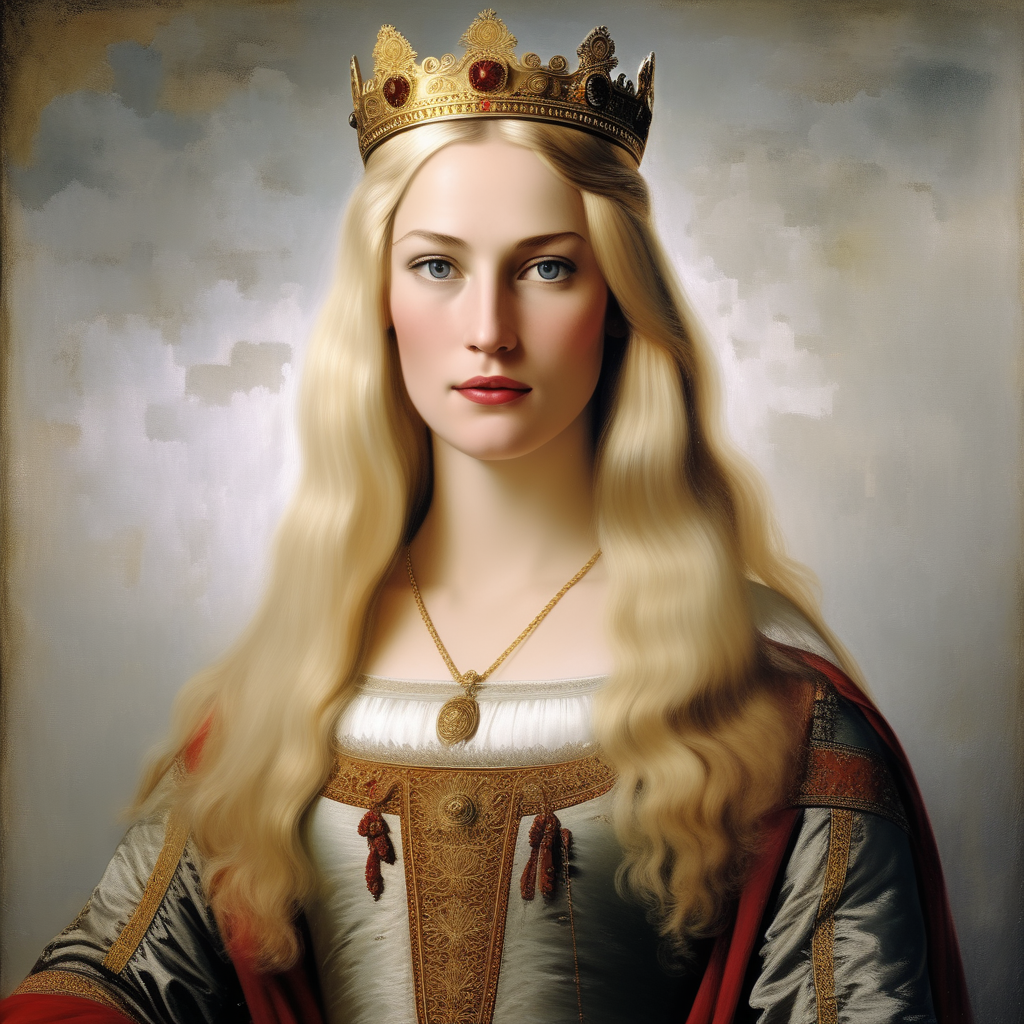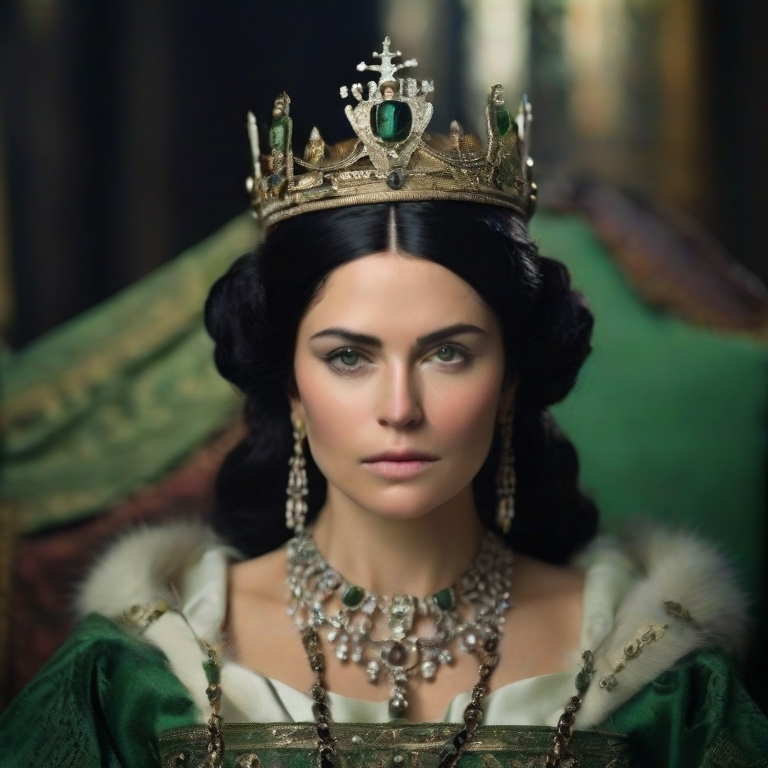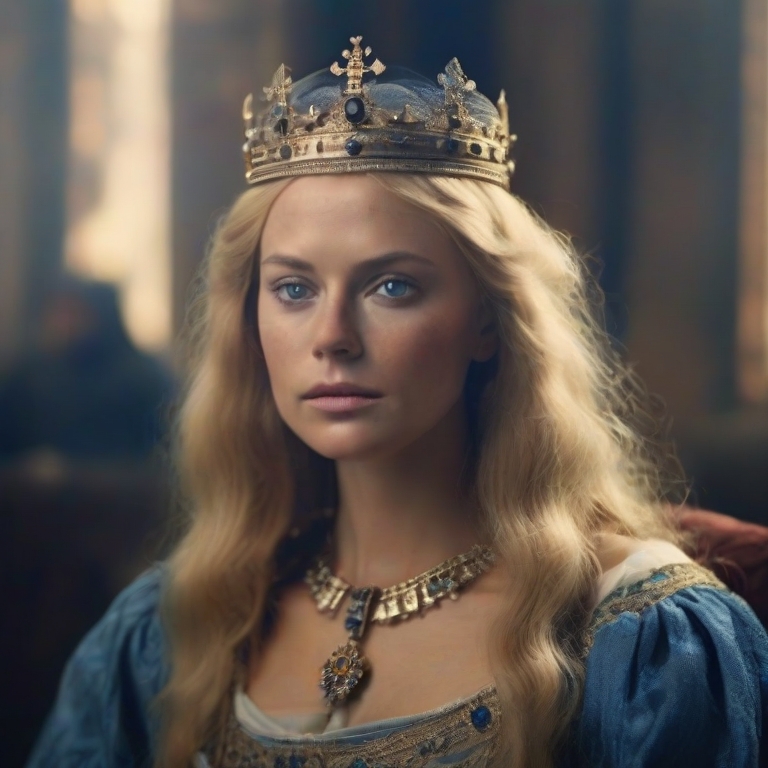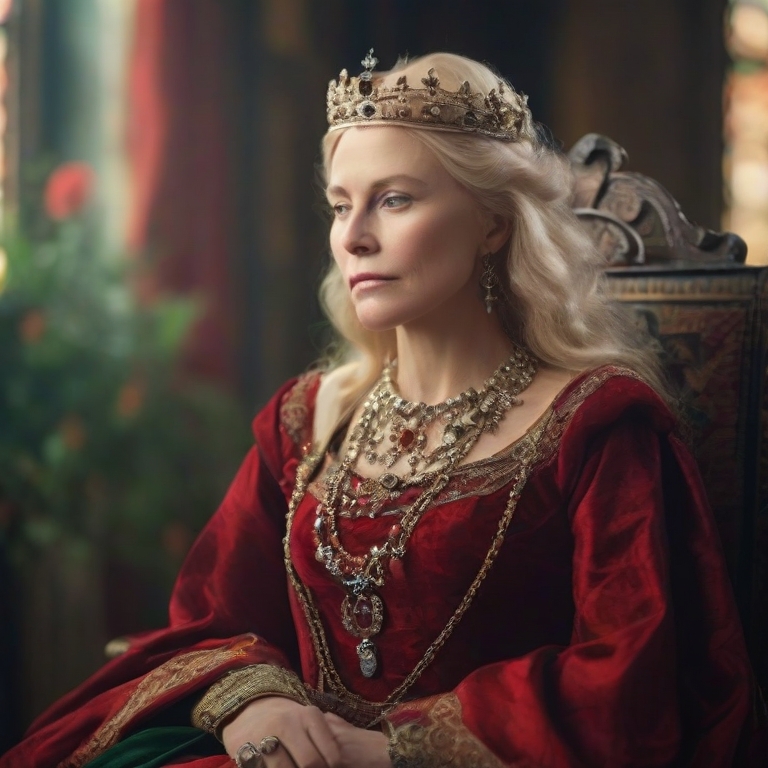Who Were Charlemagne’s Wife’s? As the first Holy Roman Emperor, Charlemagne left a legacy of conquests, cultural revival, and political intrigue. At the heart of this influential figure’s life were his marriages and relationships.
| Wife | Marriage Date | Death Date |
| Himiltrude | Around 774 | After 781 |
| Desiderata | 770 | Before 774 |
| Hildegard | 771 | 783 |
| Fastrada | 784 | 794 |
| Luitgard | 794 | 800 |
From strategic alliances to personal entanglements, the women in Charlemagne’s life played a pivotal role in shaping the course of history.
In this article, we will explore the fascinating world of Charlemagne’s wives. His marriages were significant for his reign. The intricate dynamics linked his personal life to the grand stage of medieval Europe.
Wife 1. Queen Himiltrude

Very little is known about Himiltrude’s early life. She was likely born into a noble Frankish family sometime in the mid 700s, but there are no records of her family or background before she married Charlemagne.
There is also some dispute about the nature of Himiltrude’s relationship to Charlemagne. Some historians believing she may have been a concubine.
As one of Charlemagne’s early consorts when he was still King of the Franks, Himiltrude held an important position in his court. Their probable marriage brought together the Eastern and Western Franks under Charlemagne’s rule.
Together they had a son named Pepin, who was born in 769 with a hunched back, earning him the nickname Pepin the Hunchback. Some accounts suggest Himiltrude may have also had a daughter, but there is no supporting evidence.
When Charlemagne decided to marry the Lombard princess Desiderata in 770 to expand his empire, he rejected Himiltrude, significantly lessening her status and influence.
Very little else is known about Himiltrude’s life after she was forced out of the marriage. It is believed that she went to live in a monastery.
Wife 2. Queen Desiderata

Desiderata was born a princess of the independent Lombard kingdom in northern Italy sometime in the middle of the 8th century.
Her father was King Desiderius who ruled the Lombard state.
In 770 AD, in an effort to forge an alliance between their two realms, Desiderius arranged for his daughter Desiderata to be married to the mighty Frankish King Charlemagne. This marriage was intended to confirm a bond between the Franks and the Lombards in Italy.
For Charlemagne, marrying Desiderata brought him recognition and influence in Italy through his Lombard royal ties.
For Desiderius, it was hoped that the marriage would discourage Charlemagne from conquering his kingdom.
Initially, the union between Desiderata and Charlemagne marked a high point of cooperation between the Frankish and Lombards kingdoms. However, the alliance was short-lived.
Just one year after their marriage, in 771, Charlemagne rejected and divorced Desiderata. The reasons are uncertain but may relate to political tensions.
Desiderata herself seems to have had limited personal impact. Yet the marriage laid foundations that enabled Charlemagne’s brutal conquest of the Lombards in 773-774. Within a few years Charlemagne invaded Italy, deposed Desiderius and took control of the former Lombard territories.
So, while brief, Desiderata’s marriage to Charlemagne set the political stage for his empire’s expansion into Italy through the overthrow of her own father.
Wife 3. Queen Hildegard

Queen Hildegard was born around 758 AD into a noble and influential Frankish family, although little else is known of her background or life prior to marrying Charlemagne in 771 AD.
As Charlemagne’s second wife, Hildegard helped solidify his control over the Frankish tribes through their marriage.
Hildegard bore Charlemagne nine children, including his second son Charles the Younger. In his will of 806, Charlemagne divided his domains between the three surviving sons of Hildegard.
As mother to the heirs of the empire, Hildegard is often called “mother of Kings and Emperors”.
Hildegard travelled extensively with Charlemagne as he expanded his kingdom through military campaigns into conquered lands such as Lombardy in northern Italy. As queen, Hildegard likely helped promote Christianity within Charlemagne’s realm wherever his court would reside.
She seemed to have brought a sense of order and domestic stability while Charlemagne focused on warfare and politics to dramatically expand his empire in the early years of his reign.
After over a decade of marriage to the mighty Frankish king, Hildegard passed away in 783 AD.
Although few personal details about her are known, as Charlemagne’s wife and queen during his vital early expansion years, Hildegard surely held notable influence as an adviser at court and patron of religious institutions.
Through her travels with Charlemagne and management of his court when he was absent for long periods, she facilitated the smooth governance of his vast kingdom in those volatile formative years. Her death was likely a blow to Charlemagne’s imperial ambitions.
Wife 4. Queen Fastrada

Fastrada was born around 765 AD into an influential noble family of East Francia.
Her father was Count Radolf, a prominent East Frankish nobleman who held considerable power in Charlemagne’s expanding kingdom.
Like the queens before her, little is known about Fastrada’s early life before her marriage to King Charlemagne in 784 AD.
Her marriage followed the death of Charlemagne’s beloved third wife, Hildegard. Fastrada’s marriage strengthened Charlemagne’s political ties to the important and powerful families of East Francia along his empire’s eastern borders.
As Charlemagne’s third wife and queen, Fastrada played an active role influencing politics and affairs at court. She was known to aggressively engage in dynastic politics concerning the Frankish realm and Charlemagne’s royal court.
Fastrada seemed to exploit her privileged access to the King to further her interests and undermine rivals. Some historical sources criticize her alleged cruelty and vindictiveness in plotting against Charlemagne’s enemies who opposed her rise to power.
Fastrada’s sudden, unexpected death in 794 AD reportedly left Charlemagne extremely distressed over losing his influential wife.
Her prominence shows the power medieval queens could wield over their husband kings and their courts. Both Charlemagne’s grief at Fastrada’s passing and contemporary criticism of her ambition reveal the force of her presence during her roughly ten years as the Queen of the Franks at the side of King Charlemagne.
Wife 5. Queen Luitgard

Queen Luitgard was born around 775. She brought a unique background and set of qualities to her marriage with Charlemagne.
Her union with the King of the Franks in 794 marked an important chapter in the Carolingian dynasty. Their marriage was seen as a strategic alliance, consolidating power and fostering connections between different regions within Charlemagne’s vast empire.
Luitgard did not have any children with Charlemagne.
Luitgard’s role as queen consort positioned her at the heart of the Carolingian court, where she would play a significant part in both cultural and political spheres.
Luitgard is noted for her interest in the arts and learning, contributing to the cultural vibrancy of the Carolingian court. She actively supported and patronized scholars, poets, and artists, fostering an environment conducive to intellectual pursuits. Her court became a center for the exchange of ideas and the preservation of knowledge, playing a crucial role in the Carolingian Renaissance.
Luitgard died on June 4, 800, at the monastery of Saint-Martin de Tours, during a tour with Charlemagne in Neustria. The exact cause of her death is unknown, as she passed away from an unspecified illness.
The Concubines of Charlemagne
In medieval European royalty, concubinage was a practice where a ruler maintained a recognized, yet unofficial, marital relationship with a woman outside of formal marriage.
While wives held a distinct and acknowledged social status, concubines occupied a less formalized position, often resulting from strategic alliances, political considerations, or personal affections.
In addition to his formal marriages, Charlemagne had several concubines whose names and backgrounds are less extensively documented compared to his wives. These relationships were often shaped by political considerations and alliances, contributing to the consolidation and extension of Charlemagne’s authority across his vast empire.
The roles of Charlemagne’s concubines were multifaceted, extending beyond personal relationships to impact the dynamics of the Carolingian court.
Frequently Asked Questions
The Legacy of Charlemagne’s Marriages
The exploration of Charlemagne’s relationships with his wives and concubines unveils a fascinating tapestry of medieval politics, culture, and personal dynamics. The marriages with Queen Himiltrude, Queen Desiderata, Queen Hildegard, Queen Fastrada, and Queen Luitgard stand out as pivotal moments that shaped the Carolingian Empire. These unions were not merely personal choices but strategic moves that fostered cultural and intellectual growth, solidified political alliances, and contributed to the empire’s stability.
The impact of Charlemagne’s wives and concubines on his reign and legacy is undeniable. The queens, hailing from diverse backgrounds, played crucial roles in shaping the cultural and intellectual landscape of the Carolingian Renaissance. Their marriages were instrumental in political stability, diplomatic alliances, and the consolidation of Charlemagne’s vast realm.






